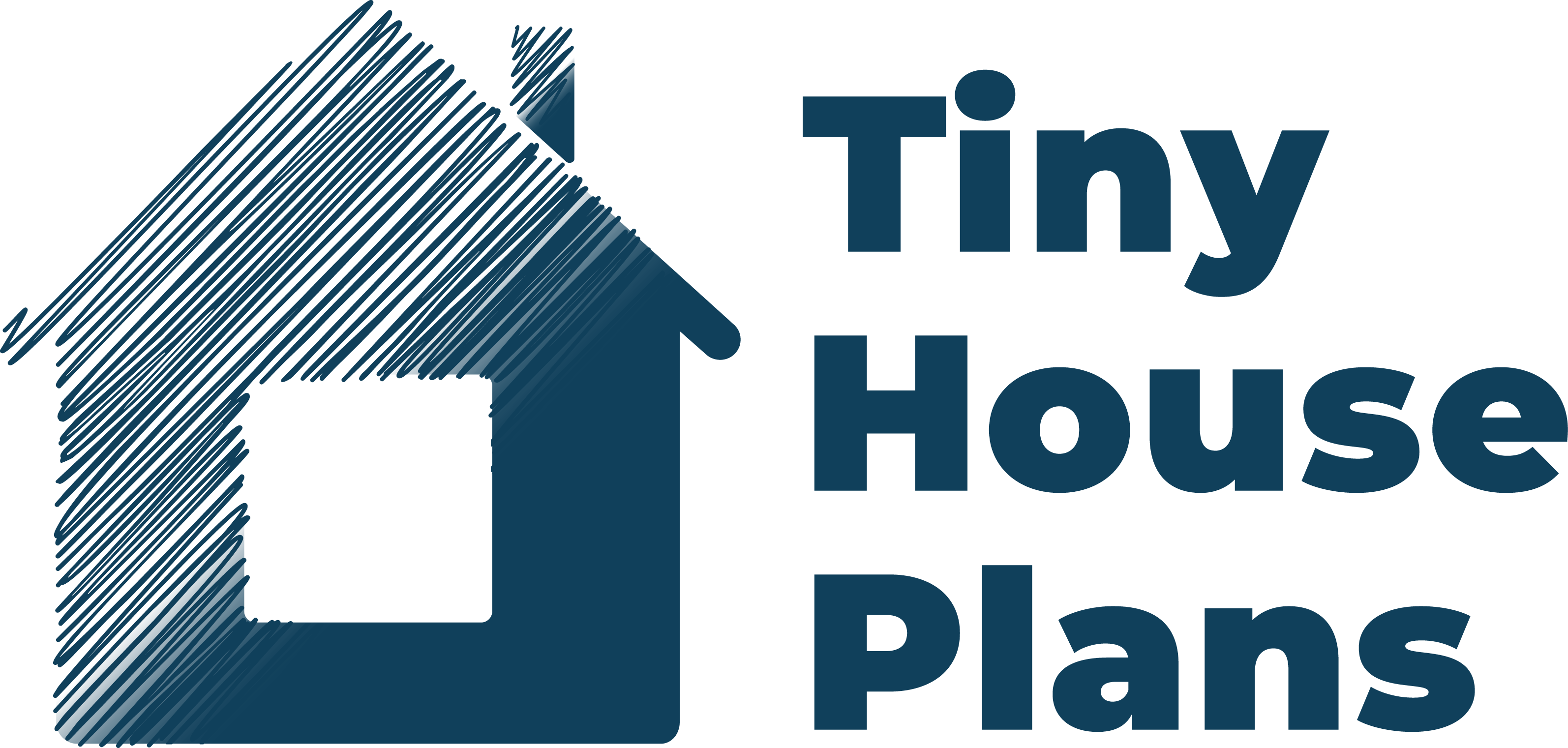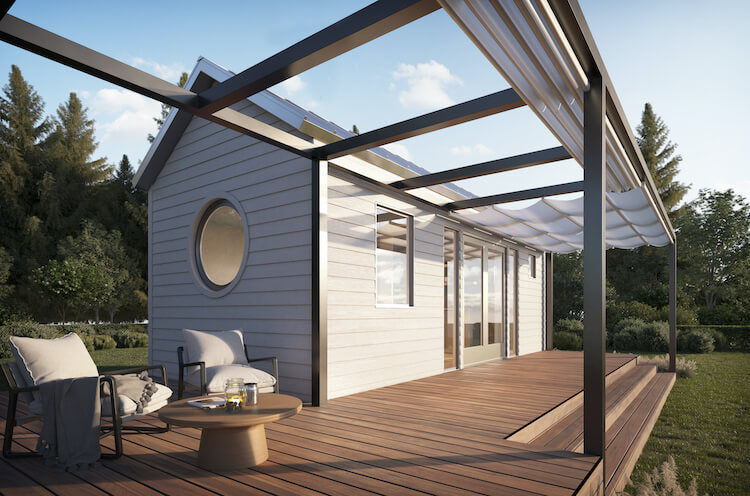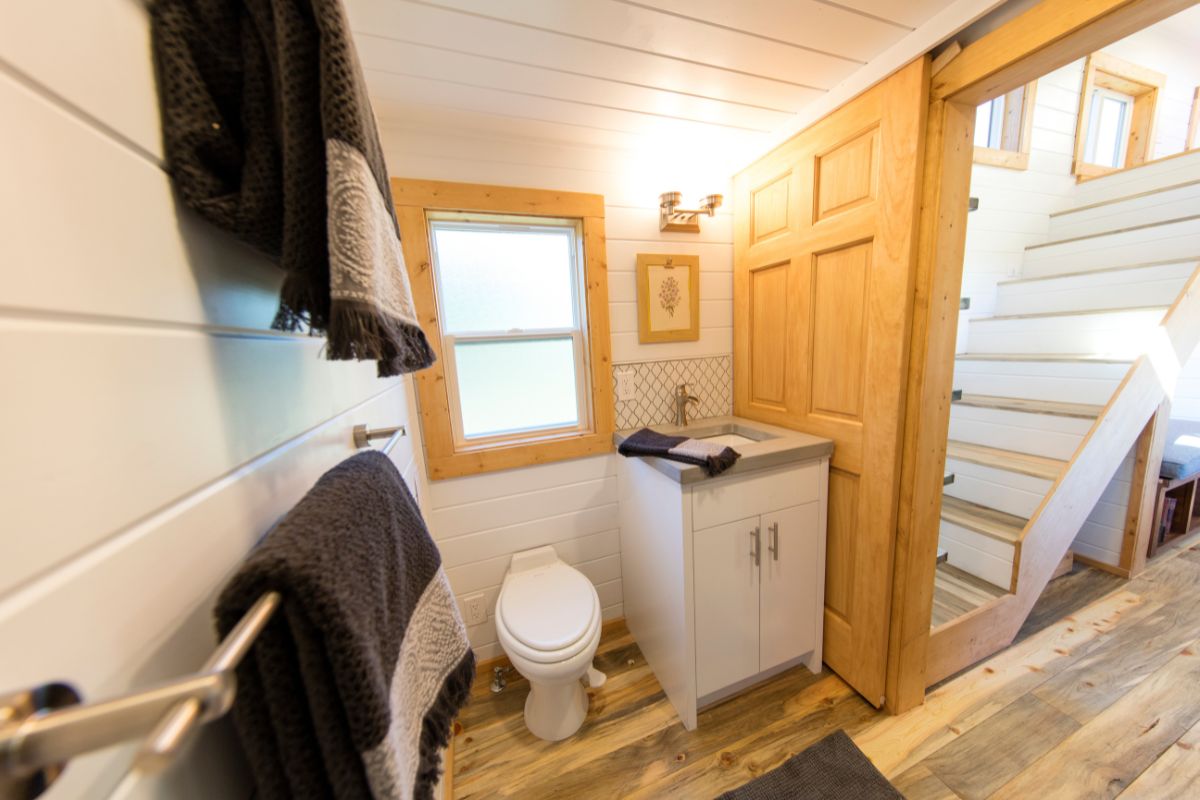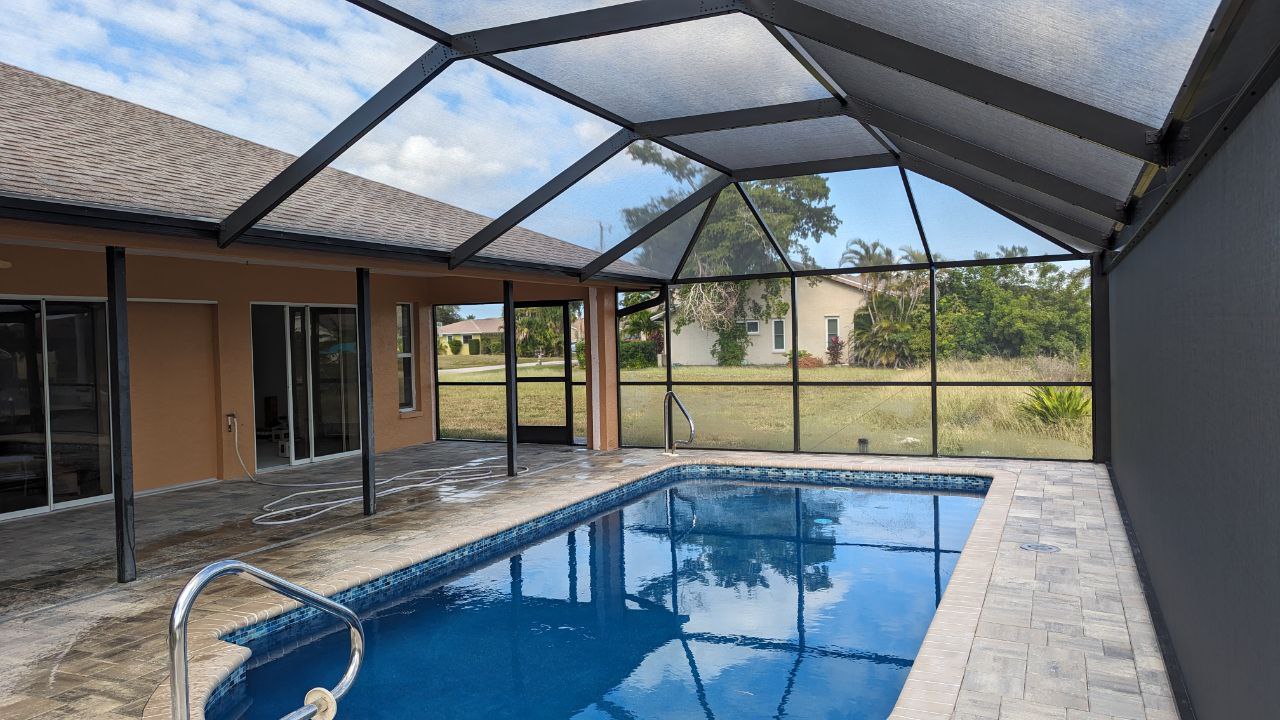Staging It For First Impressions
When it comes to selling any home, first impressions are key. However, making a tiny home appealing is tougher when your living space is extremely small. Staging your tiny home is not just about making it look pretty. Show off the easy lifestyle it offers. Small doesn’t have to mean bad!
Make sure to declutter your tiny home before homebuyers start walking through. It’s important to keep your place tidy when trying to find a respectable house buyer to purchase your tiny home isn’t easy. Do your best to leverage staging and attract multiple homebuyers to your place. Use light, neutral colors to make the space look larger and brighter. With solid staging, you give buyers a glimpse into a lifestyle that is as efficient as it is captivating.

Nail Those Photos
In today’s digital age, listing photos serve as the first tour for most homebuyers. Investing in professional photography is non-negotiable. Photographers experienced in shooting small or unconventional spaces will know the tricks to make your tiny house look spacious.
A professional photographer can use wide-angle lenses to capture more of each room. The goal is to make your tiny home look Instagram-worthy when marketing it. Pictures are everything when selling a property online to hopeful tiny house owners. On the other hand, misleading photos can backfire during in-person visits. Keep your tiny house marketing honest but captivating.

Leverage Social Media
Social media is a great place to market your tiny home. Tiny houses are a viral phenomenon! They make shareable, eye-catching content that homebuyers love to scroll through. Put together small video tours, live walkthroughs, or a series of posts detailing a "day in the life" in a tiny home. You can even create a hashtag specific to your listing to track interest.

Embrace the Niche
A tiny house is a niche part of the real estate world. Rather than advertising to everyone and anyone, focus your marketing efforts on communities that you think would actually be interested. For example, anyone who enjoys minimalist living, sustainability, or alternative housing could be a great candidate to market your tiny home to. There are countless online forums, Facebook groups, and even dedicated websites where you can post your listing. By targeting these niche communities, you increase your chances of finding a buyer who doesn’t just "like" your home, but loves the lifestyle it represents.
Talk Numbers
Financial transparency is a major selling point. Potential buyers will likely have questions about everything from utility costs to land fees. Tiny homes are known for their affordability and low overhead costs. Don’t be afraid to flaunt those numbers.
Consider comparing your tiny home's financial figures to other traditional homes in the area. That will help show off yours as a smart investment. Give potential buyers a detailed rundown of average monthly expenses and long-term maintenance costs. This will help them imagine if they can truly afford this lifestyle. These numbers could be the tipping point for a buyer who's still on the fence.
Local Partnerships
Community engagement can offer surprising marketing opportunities when selling a tiny home. Partnering with local businesses that align with the tiny living ethos can benefit both sides. For example, a local shop specializing in sustainable goods, a popular café, or yoga studio may all have similar interests in the lifestyle that tiny homes offer. These partnerships can help you tap into the perfect demographic for your listing. Host joint events with these businesses to get to know their clientele.
Lead with Facts
Statistics offer credibility to any selling point. Today, over 86% of Americans would consider purchasing a tiny home. This stat indicates that the tiny home trend has a substantial following. A good chunk of those who said yes were likely Millennials. That means this type of living is especially appealing to a younger demographic. Utilizing statistics like this one can help validate your marketing efforts. If you know your audience of potential homebuyers, you can tailor your marketing pitch toward them.

Virtual Open House
The pandemic normalized virtual gatherings for nearly everything. This includes open houses. A virtual open house can be incredibly effective for selling a tiny home. It offers buyers the opportunity to tour the home from the comfort of their own living room. Platforms like Zoom or Facebook Live are excellent mediums for this. Tiny homeowners can guide buyers through every nook and cranny of the property. Homebuyers love convenience, especially when it comes to shopping for a home.

Environmental Benefits
Climate change and environmental conservation are hot topics in today’s world. Consider highlighting your tiny home’s sustainability benefits. By owning one of these properties, you instantly reduce your carbon footprint. Your marketing should make this loud and clear.
Do you have solar panel installations? Talk about them. Are the materials in your tiny home sourced sustainably? Feature this in your listing. Even things like water-saving plumbing fixtures and energy-efficient appliances aren't just bells and whistles. They are powerful motivators for a growing demographic of eco-conscious buyers. By highlighting the environmental benefits of your tiny home in your marketing strategy, finding a buyer will be much easier.
Eco-friendly features of a tiny home also translate to financial savings for the buyer. For example, future buyers can expect lower utility bills, tax breaks, or even grants. This added layer of value could be the tipping point that turns a casual browser into a committed buyer.

Create a Comprehensive FAQ
You may think a tiny home would lead to fewer questions, but it's usually the opposite. Prospective buyers often have an encyclopedia's worth of queries. Many potential tiny house buyers will be trying it out for the first time. It makes sense they have tons of questions.
For example, zoning laws and utility hook-ups are two major points buyers often ask about. Addressing these questions upfront can eliminate doubts and speed up the selling process. An exhaustive FAQ section can serve as a powerful tool in your marketing arsenal.
Create a list of frequently asked questions based on your interactions with potential buyers. Review discussions in tiny house forums and add questions from there too. Other important details to include are things like technical specifications, customization options, and financing solutions. Also, discuss aspects like mobile vs. stationary tiny homes. There are often laws about where someone can park their tiny home if it’s moveable.
Upload this FAQ section as a downloadable PDF on your listing. You can also email it to interested parties. The goal is to empower your buyers with as much information as possible. Knowledge dispels fear. A well-informed house buyer is more likely to actually make an offer.
Marketing for Tiny Homes
Selling a tiny home is a unique endeavor. You can’t sell a tiny house without preparing your marketing strategies. Highlight the perks and create a thorough FAQ section so buyers can make informed decisions about the sale. Showcase a great and simple lifestyle of living in a tiny home to potential buyers who are seeking a more minimalist lifestyle.






Share: